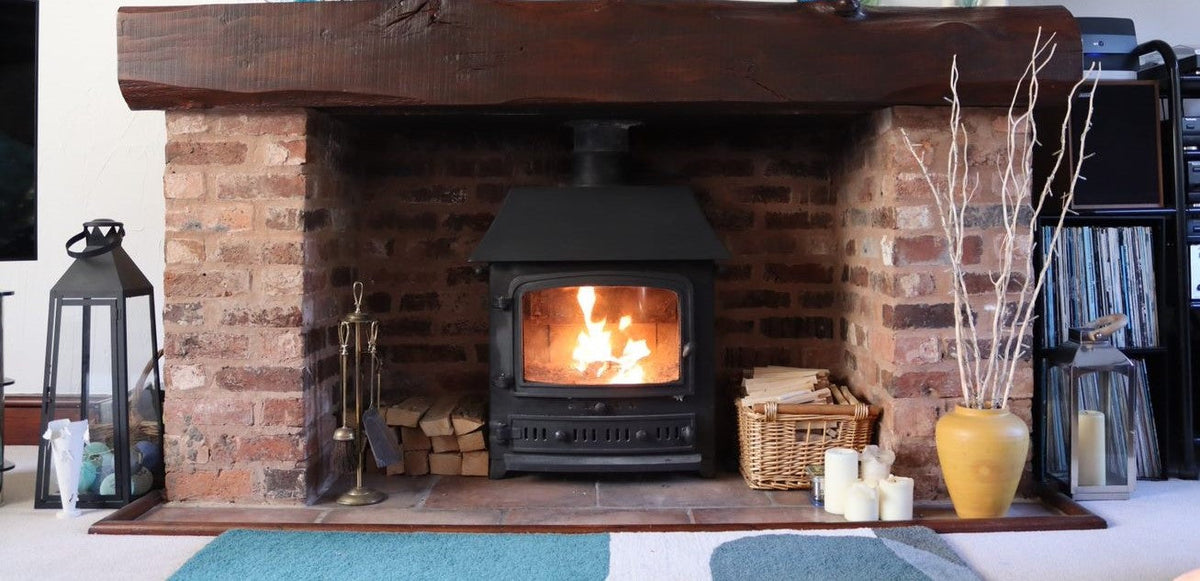

You might have seen some scary headlines throughout January 2023 about new government regulations for wood burning stoves.
We’ve written before about the Government’s Clean Air Strategy 2019 and what this means for our customers who use log burners and wood burning stoves, and the truth is that very little has actually changed since January 2022, when new regulations were introduced for newly installed wood burners.
However, the media loves to whip up a frenzy and some minor changes to rules in a few smoke-controlled areas were reported as ‘a first move towards further regulation’ – and we’ve had lots of emails from concerned customers about what it means for them.
Here’s our view on what the new regulations are, and what they mean for you if you already have a log burner.
Why are the government introducing new wood burning regulations?
The government’s main aim is to improve air quality by reducing particulate matter, and more specifically PM2.5.
What is PM2.5?
When wood is burned it emits particulate matter, including PM2.5, which are tiny particles of solids or liquids in the air. Some we can see, like smoke and soot, and others are microscopic, but they're all small enough that we breathe them in. This can cause health problems if inhaled in large amounts, so it’s important that we reduce them as much as possible.
What are the new regulations for wood burning stoves?
At the moment the only regulatory change we can see in 2023 is a reduction in permissible levels of smoke in some smoke control areas, but these aren’t yet publicised, and you’re encouraged to reach out to your local council for more information. The council has always been able to fine people in smoke controlled areas for burning the wrong thing but this is being reported as new information!
Why is the government penalising homeowners with log burners?
Your guess is as good as ours! The government still pay substantial amounts of money to subsidise the burning of wood fuels in both the public and private sector, with a significant number of schools, hospitals and businesses paid for their generation of green energy under the Renewable Heat Incentive, or RHI, much of which is generated through the burning of wood.
So, on one hand, domestic wood burning is labelled as bad for the environment, but on the other, the government are subsidising industrial wood burning to generate green energy and assist in achieving carbon targets.
This feels somewhat hypocritical to us, and it may be that individuals are an easier target than businesses.
Should I replace my wood burning stove?
The short answer is no!
Ecodesign stoves are fantastic, and their sale for those in need of a new wood burning stove should absolutely be the only option. They’re more efficient and they produce significantly lower levels of particulate emissions. But should you immediately rush out and replace your wood burner?
As an individual, this decision is almost impossible to make. Continuing to drive an older diesel car is considered to be better for the environment when compared to the carbon emissions caused in the manufacture of a brand new one. With solar power, we’re able to consider the “carbon payback” of the generation of clean energy, versus the carbon emissions caused during the manufacture of solar panels.
At this stage, there’s no data available to support the comparison of an older wood burning stove, versus the environmental impact of producing, transporting and installing a new one. What would the carbon emissions be if 2 million households rushed out to buy an Ecodesign wood burning stove?
Until this data is available, we feel it’s irresponsible to advise consumers to rush out and buy brand-new stoves that are manufactured from very carbon-intensive materials.
How can I reduce emissions from my log burner?
You can choose to run your existing wood burning appliance in a manner that reduces PM2.5 emissions:
- Always burn very dry firewood with a moisture content less than 20%
- Run your stove with the vents fully open to maximise airflow and burn fuel as cleanly as possible
- Never use overnight fuels – such as so called “Night Briquettes” – which are designed to smoulder and stay alight for as long as possible
In summary, while it's right that we should do everything we can to reduce PM2.5, we felt that the widespread approach was alarmist and designed to worry users of older wood burning appliances.
Education should be used first and foremost to help consumers understand and improve their use of existing wood burning appliances, and solid scientific data is required before consumers should be pressurised to upgrade to modern Ecodesign stoves.
Found this useful?
We'd love it if you shared it with your fellow log burner enthusiasts!





